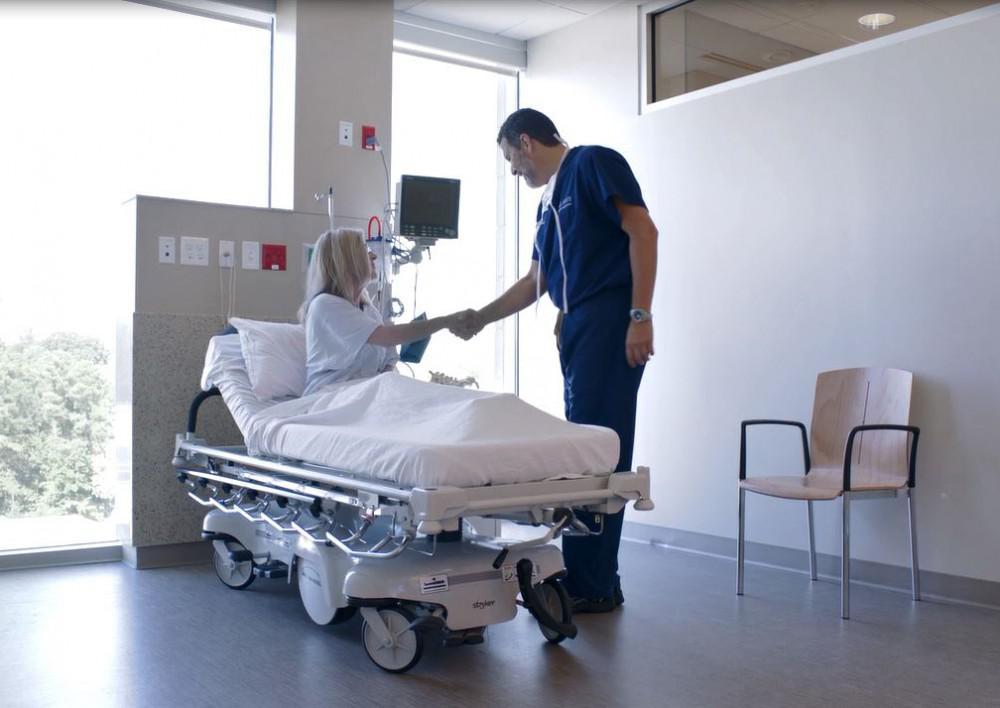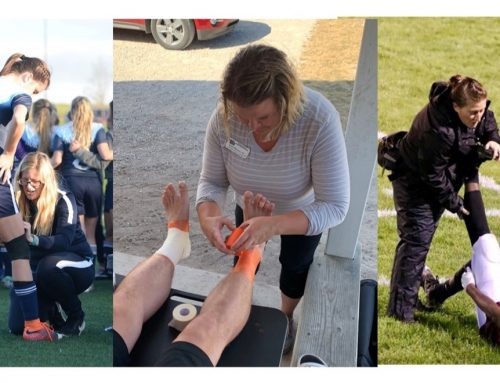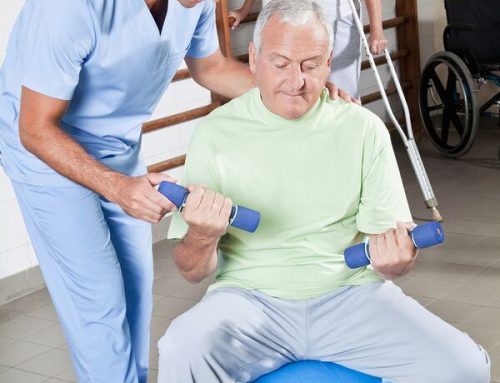You may have heard of “robotic” assisted surgery for procedures such as a knee replacement. Ongoing advances have seen this technology spread in application to other types of surgeries for other body parts, including the spinal column.
To learn more about this type of surgery, I spoke to Dr. Tony Bozzio, MD. Dr. Bozzio is an orthopedic surgeon at Bay Street Orthopedics and sees patients in Petoskey, Charlevoix, Gaylord, St. Ignace, and Traverse City. He recently began offering robotic-assisted spine surgery in his St. Ignace facility.
What exactly is meant by “robotic” surgery when it comes to the spine?
The robot can be thought of as a guidance system for the surgeon. Based on either preoperative planning ahead of time, or using several x-ray images during surgery, the robot software is able to generate a three dimensional image of the patient’s spine. Then, the surgeon can plan the placement of pedicle screws for fusion, various other screws, interbody placements, and eventually even map out areas of bone for decompressing nerve roots.
The robot is able to tell where the patient’s bone is located and then aim a rigid arm to assist with the correct trajectories. This allows for less steps when placing pedicle screws and potentially increased accuracy with even less soft tissue disruption. It also allows for more complex cases when anatomy is altered by prior surgery or severe deformity, for example. The planning ahead also lets the surgeon plan the best location for fixation and pre-measure all screws, so that OR time is reduced for certain steps.
Is this a new technology?
Yes, this is the newest technology in spine surgery. The particular robot that I will be using is built for the current guidance methods, planning, and real time navigation. On the horizon is augmented reality that will link into this system and allow the surgeon to “see” the three dimensional rendering of the spine without all of the soft tissue disruption of a traditional open surgery. This will all advance minimally invasive surgery.
Is robotic surgery widely available for spine surgeries?
This particular robot is the only one in Northern Michigan. They are not widely available. There are other technologies out there that assist with navigation but the robot adds the stability of the aiming arm as well which I personally think increases accuracy. It also is built with new technology in mind so it can continue to grow with future updates.
What advantages does robotic surgery have compared to standard techniques?
The main advantages include reproducible and accurate pedicle screw placement, preoperative planning for the best possible fixation, reduced time in the OR, reduced x-ray or fluoroscopy to the patient and operating room staff, and the ability to work through altered anatomy.
Here are a few things you can do for any type of back pain, regardless of whether you’ve had surgery, plan to have surgery in the future, or just want to get rid of day-to-day aches and pains:
- See a physical therapist first– We’re specialists in human movement. While exercise is good for nearly all types of back pain, certain types of exercise can be detrimental to certain spine conditions. A specialist can help you match the right type of exercise to your individual issues.
- Keep moving– Research has long supported general exercise as a means of reducing pain and improving mobility in nearly all conditions which cause pain. If you’ve been sedentary, committing to a 30 minutes daily walk is a great place to start. Other forms of general exercise can be biking, hiking, or a gym-based exercise regimen that works the entire body. Before you start that last one, see the suggestion above.
- Get educated– Knowledge is power. In cases of pain that has been present for at least a few months, most people report a significant amount of fear surrounding their condition. They worry that certain activities might cause even more pain or may injure them further, so they (understandably) decide to lay low. Unfortunately, this often creates a cycle in which more pain leads to less movement, which causes more pain, which leads to less movement, and so on and so on.
That last item can’t be understated. Many times when I meet for the first time with patients experiencing pain, we spend most of the session just reviewing the source of their pain and learning what it is ok to push through and what isn’t. If patients leave that first session with a decent understanding of why they hurt and what they can still do safely, we’ve set ourselves up for success down the road.







